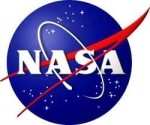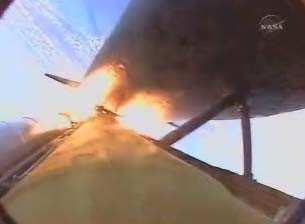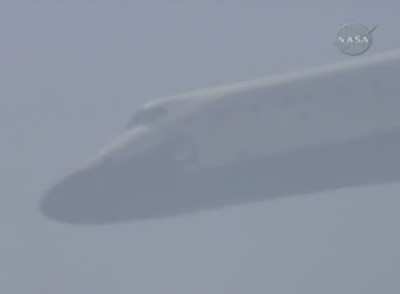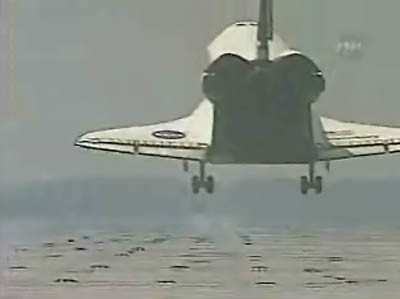Will Monitor Heat Shield Tiles For Launch Impacts, Transition
Experiment
Researchers at NASA's Langley Research Center will be back on
the job watching over the space shuttle Discovery during its last
mission, scheduled Feb. 24 to March 7. Some are part of the impact
assessment and aerothermodynamic heating teams, and others will be
watching during the orbiter's return to Earth.

Discovery's STS-133 mission is set to launch shortly before five
in the afternoon, Thursday, Feb. 24, and return 11 days later. The
shuttle is rocketing to the International Space Station to deliver
a multi-purpose module and spare parts and storage capacity to the
orbiting complex. Discovery also will transport Robonaut 2 –
the first humanoid robot in space. During the mission NASA Langley
researchers participate on damage assessment and impact dynamics
team. Those teams identify and evaluate if there's any risk to the
shuttle if the orbiter's wing leading edges, nosecone and fragile
tiles get hit from debris.
Engineers also play a lead role in managing the Boundary Layer
Transition Experiment, which records temperature changes from a
small "speed bump" installed on Discovery's lower left wing. The
idea of the bump, which is about the size of a piece of gap filler
that might shake loose in flight, is to "trip the boundary layer"
or disrupt airflow across the shuttle's belly, turning it from
smooth to turbulent. Turbulence creates extra heat. How much heat
is something engineers need to know to design safe spacecraft.

Discovery Fuselage And Fuel Tank On Launch
Another group from Langley, the Hypersonic Thermodynamic
Infrared Measurements or HYTHIRM team, is keeping an eye
specifically on the heat of the shuttle's re-entry into Earth's
atmosphere. They're working to improve computer models and designs
for future spacecraft thermal protection systems. "We're hoping to
successfully capture thermal images of the shuttle for the sixth
time," said aerospace engineer and principal investigator Tom
Horvath in the Aerothermodynamics Branch at Langley. "We plan to
once again place a Navy aircraft under the shuttle flying 18 times
faster than a bullet so the crew can use a special infrared optical
system to record Discovery's heat signature during re-entry."
The HYTHIRM team has been successful in acquiring thermal images
of re-entry during previous shuttle missions including STS-119,
STS-125, STS-128, STS-131 and STS-132. So far they have captured
calibrated thermal imagery ranging from Mach 8.5 to Mach 15.5.

Discovery On Landing
The US Navy NP-3D Orion aircraft and the long-range infrared
optical system are called "Cast Glance" and are operated by the
NAVAIR Weapons Division, Pt. Mugu, CA. The Orion, which can stay
aloft for about 11 hours, stays over international waters until
it's time for the shuttle to re-enter. At closest approach, the
aircraft and its crew will be approximately 25-40 miles from the
shuttle. Because the orbiter is banking on descent the plane will
not be directly under it. Mission planners say the aircraft
location and flight maneuvers proposed for the observation have
been carefully planned to ensure safety to the orbiter and the
respective crews.
A team from NASA Langley will be in mission control during
re-entry to collect the most up-to-date shuttle re-entry
information and make recommendations to the P-3 flight crew
regarding adjustments to the camera settings and aircraft position
for optimal viewing. The data will be recorded and downloaded
post-mission once the P-3 Orion returns to its base of
operations.
In a first for the HYTHIRM team, infrared optical systems on the
ground will simultaneously join the aircraft in snapping thermal
pictures. Crews using technology called the Mobile Aerospace
Reconnaissance System will also try to capture an image of
Discovery as it returns to Earth. They will be stationed on the
west coast of Florida to capture infrared measurements after the
shuttle has slowed down to approximately six times the speed of
sound.

The HYTHIRM team plans to take a thermal snapshot of the space
shuttle Endeavour, which is scheduled to launch for the last time
April 19. It is also working with other military and DOD and
commercial space organizations to expand capability and to apply
imaging technologies to other hypersonic flight test programs.
 ANN's Daily Aero-Linx (05.06.25)
ANN's Daily Aero-Linx (05.06.25) ANN's Daily Aero-Term (05.06.25): Ultrahigh Frequency (UHF)
ANN's Daily Aero-Term (05.06.25): Ultrahigh Frequency (UHF) ANN FAQ: Q&A 101
ANN FAQ: Q&A 101 Classic Aero-TV: Virtual Reality Painting--PPG Leverages Technology for Training
Classic Aero-TV: Virtual Reality Painting--PPG Leverages Technology for Training Airborne 05.02.25: Joby Crewed Milestone, Diamond Club, Canadian Pilot Insurance
Airborne 05.02.25: Joby Crewed Milestone, Diamond Club, Canadian Pilot Insurance






